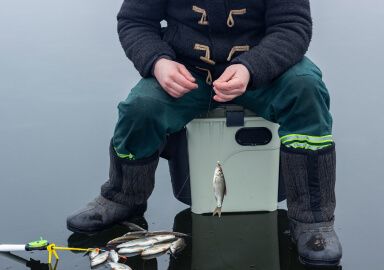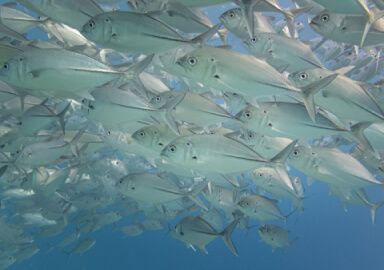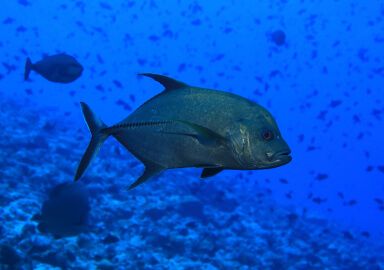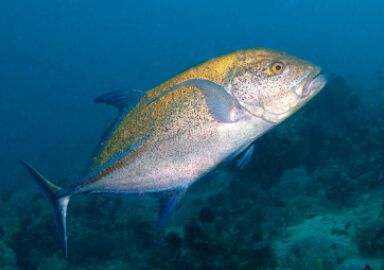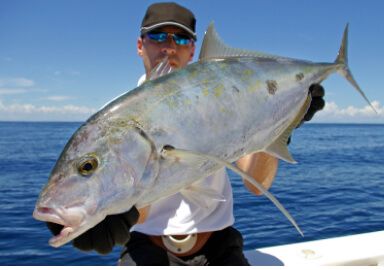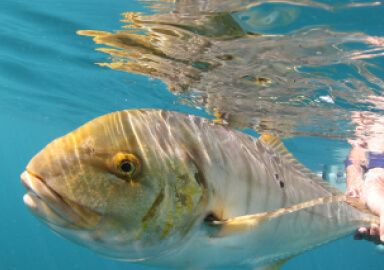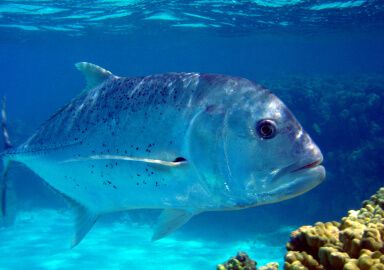Silver Trevally
Although not such a top predator as other trevallies, the silver trevally enjoys a high esteem recreational anglers in Australia and New Zealand.
View 3 listings
3
listings
–
price starting from
3
countries
–
to the nearest trip
Where and When?
Silver trevally are distributed around much of the coast of Australia and New Zealand. The species is particularly common and popular around Perth and near Tasmania. Silver trevally live in inshore waters where they frequent estuaries, shallow bays and are often found around rocky reefs. Juveniles are almost exclusively found in estuaries, and sheltered lagoons, while adults tend to be found a little further from the shore. Their depth range is given as 1-200 m. (3.3-660 ft.) and, while there are no known large-scale migrations, they move constantly along the shores and into and out of shallow waters. There is no overall seasonal pattern to their movements, apart from a small “northwards drift” in winter, and they can be caught throughout the year, although summer is usually the best fishing time.
About Silver Trevally
Silver trevally (Pseudocaranx dentex) are an elongate, thinnish, laterally compressed, typical-looking trevally with a small mouth and minimal teeth. They also have small eyes and a deeply forked tail fin. The upper regions of the body are bluish-silver and the belly is shiny silver. There is a characteristic black “blotch” at the rear of the gill covers. The maximum length is 1.2 m. (47 in.) with a greatest mass recorded as 18 kg. (40 lbs.), but most fish caught are in the range 35-60 cm ( 14-24 in.) and 0.4-2.5 kg. (0.88-5.51 lbs).
Silver trevally are a popular sport angling species and also frequently caught in beach seine nets. Unlike many trevallies, they feed mostly on invertebrates, often benthic ones, for much of their lives, although small fish become important in their diet as they grow. Silver trevally often form fairly large shoals, particularly near spawning times. The species spawns from spring, right through to fall, around estuary mouths or in deeper waters nearby and individual females can lay 50 000-200 000 eggs per season.
How to Catch?
Silver trevally, as an inshore and estuarine species, are most often caught from a shore, beach, pier or a small boat or kayak. Fly fishing can be a fun and exciting way to catch them, where conditions are suitable, but spinning using a wide variety of artificial lures is generally the preferred method. In places like estuaries or very shallow water where the fish are mostly small or medium sized, light to medium tackle is best. If, however, large specimens are around, then heavy tackle is essential to avoid serious disappointment. Bait fishing, using squid, other invertebrates or small fish fillets, is a popular way to target silver trevally from the shore.
Unlike many trevallies, the silver trevally is not an aggressive top predator and so fishing for them can be carried out more slowly, in terms of retrievals, and the lures or baits can be smaller. Around Australia some people fish using hand-lines from kayaks and other small boats. In certain areas charter boats are available with suitable equipment and local knowledge that really helps the visitor achieve success.
Although traveling to Australia specifically to catch silver trevally is uncommon, if a sport angler is there already then it makes excellent sense to find, or make an opportunity, to have a try for this interesting, tasty and potentially fairly large fish.





